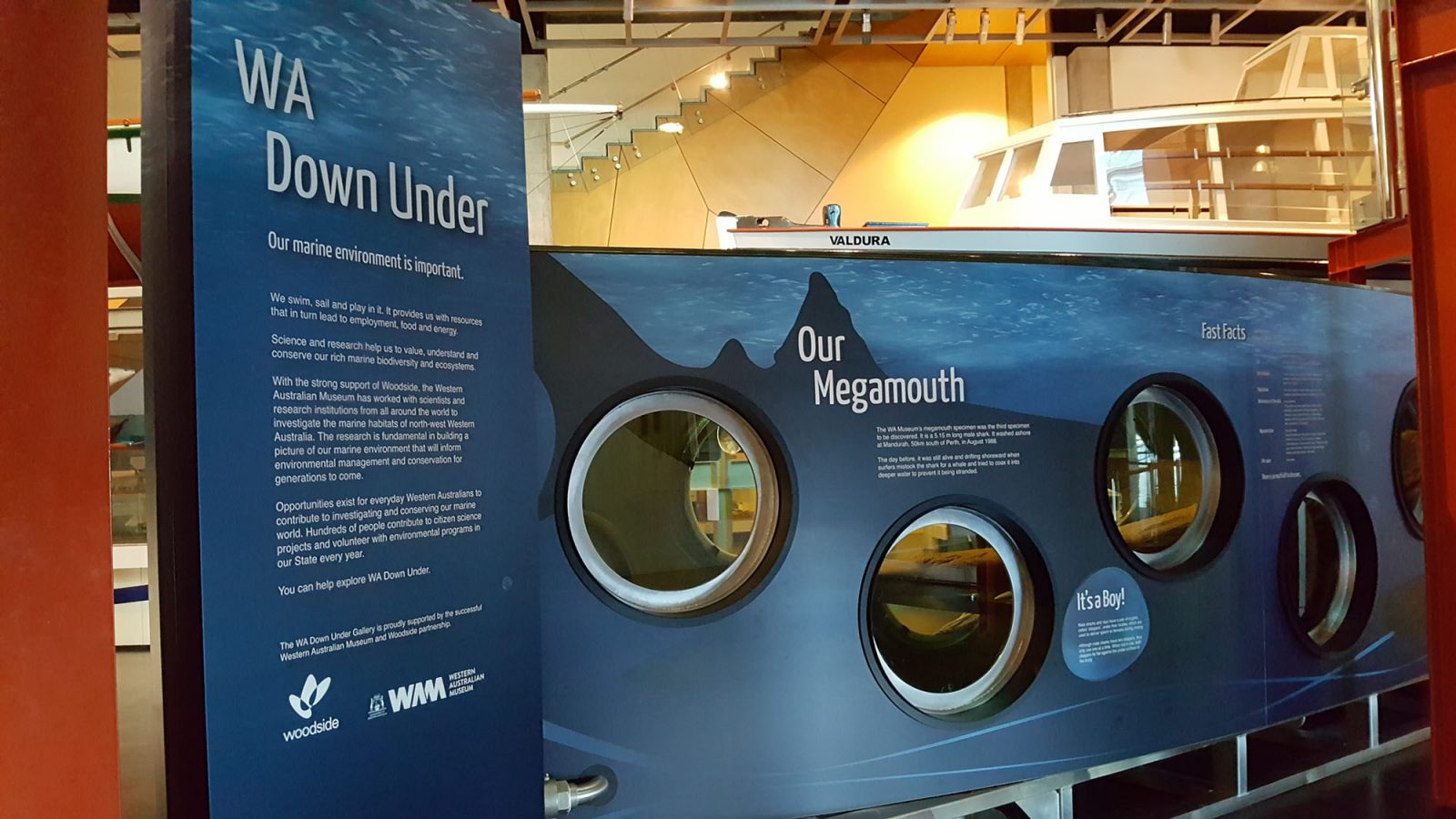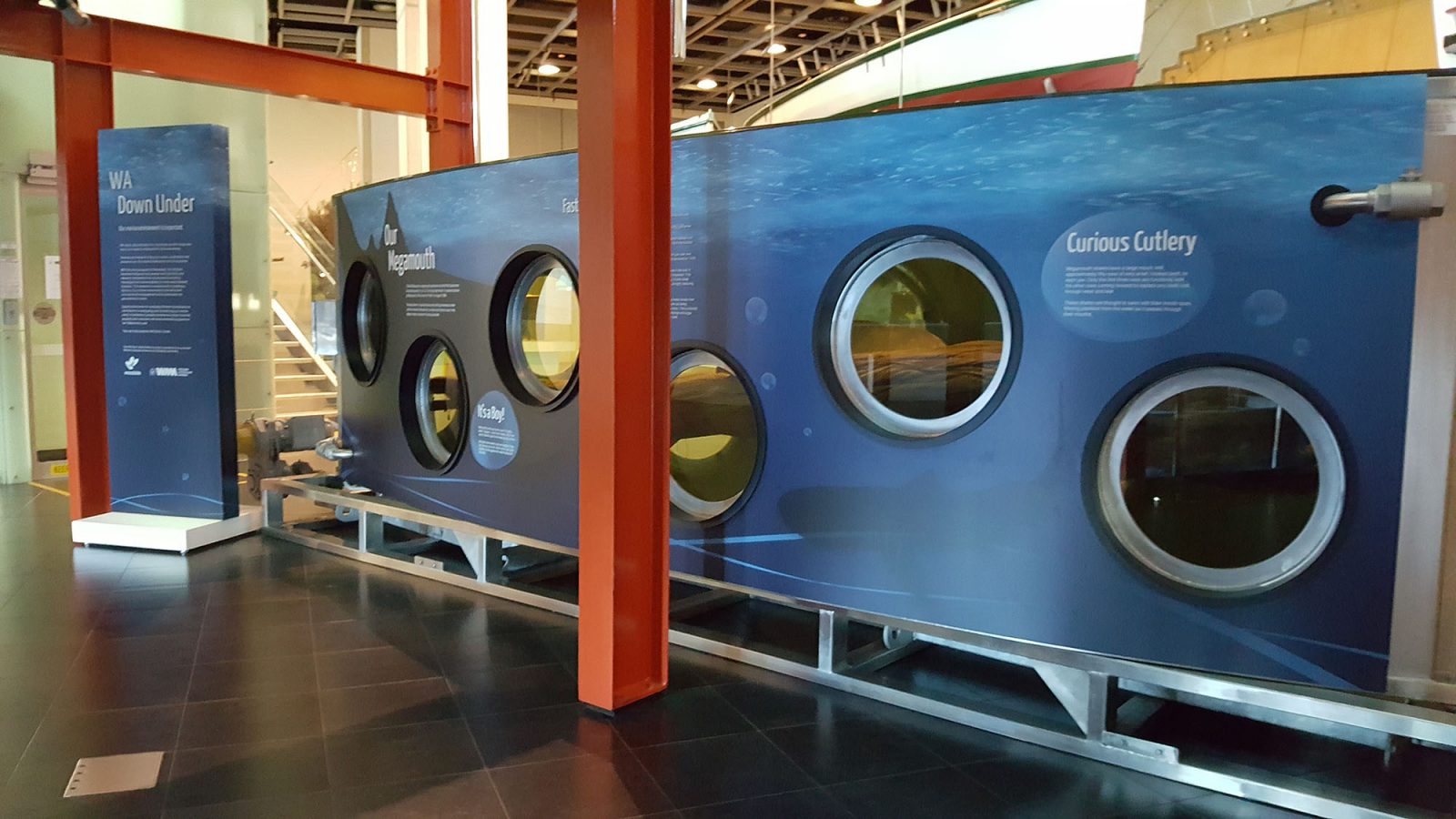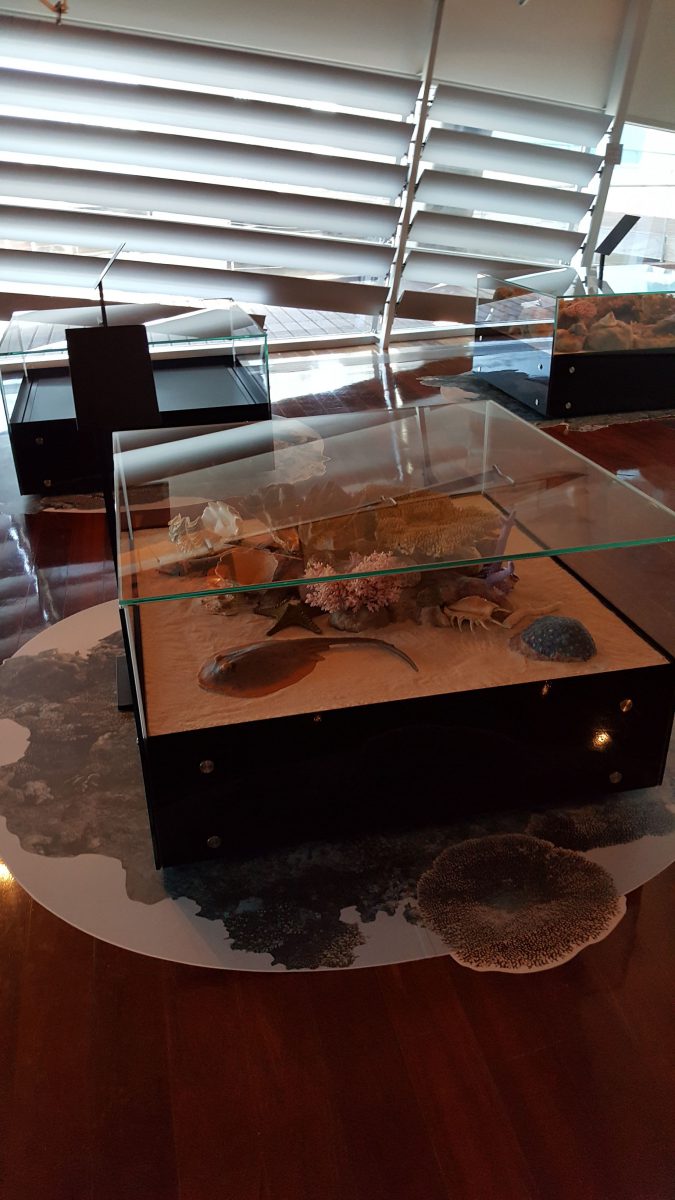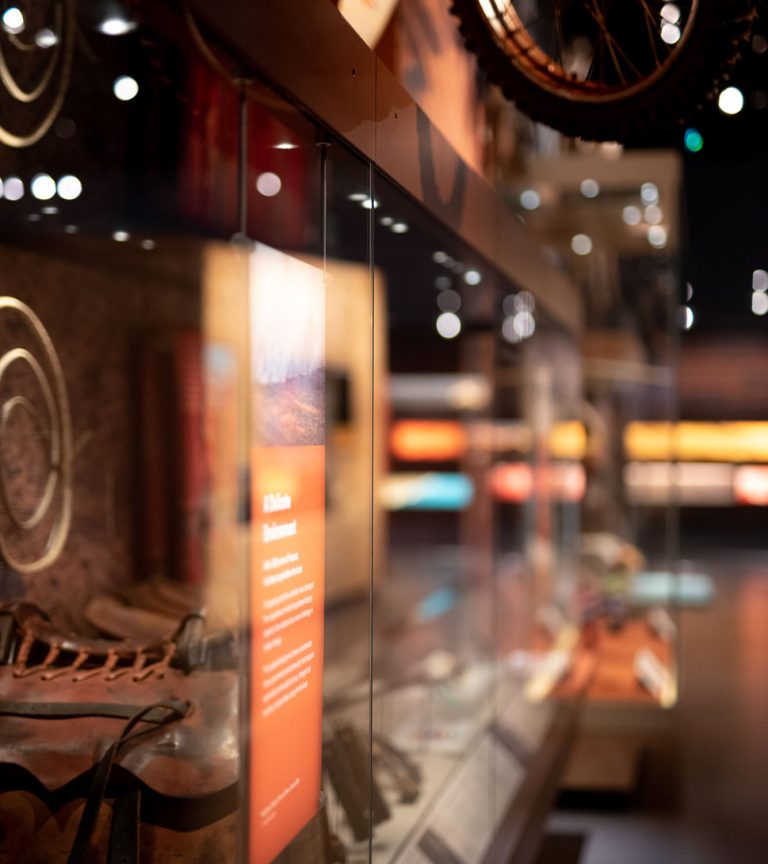Publik were engaged to develop, design and manufacture the WA Down Under exhibition for the WA Museum, formulating an immersive visitor experience that showcases the unique aquatic zoology of Western Australia’s coast.
The WA Maritime Museum required existing displays to be updated as well as incorporating new elements as part of the exhibition. Publik developed an individual design to give the gallery its own distinctive identity while at the same time complements the existing exhibits within the Maritime Museum.
Publik approached the task by working closely with the client to identify their needs and objectives, incorporate their ideas, and review the content they had curated for the exhibition in order to develop it into graphic images to enhance the display of the artefacts. Publik developed a graphic styling that would be flexible and adaptable to be applied seamlessly to various exhibition components throughout the WA Maritime Museum. This graphic styling established a definite style throughout the gallery that unites each space together as one. The development of a flexible graphic styling that could be easily adapted to work on any platform, from signage to branding and digital media, was imperative to the delivery of the exhibition within the tight timeframe.
The first item to feature the graphic styling was the tank of the Museum’s rare Megamouth specimen. A cost-effective graphic treatment was implemented onto the existing tank. This new Megamouth treatment also acts as an entrance point that attracts visitors to explore the rest of the gallery, forming a directional flow to draw and lead the visitor into the rest of the exhibition.
The Museum’s rare Megamouth specimen was contained in a large stainless-steel tank that unfortunately took much of the visitor’s focus away from the actual Megamouth specimen. Publik implemented the graphic styling into a cost-effective graphic treatment that clad the entire side of the tank, and featured information points from the supplied content at various viewing locations on the tank that drew attention directly to the Megamouth’s highlighted features. The graphic treatment was applied flush to the curves of the tank, concealing all fixings, therefore precise measurements were taken, and on-site templating was tested before manufacturing the final cladding in our workshop. The new graphic treatment successfully addresses the design brief and draws the visitor’s attention to the specimen, rather than the tank that contains it.
Following the Megamouth tank sits the Reef Walk, which features custom designed, conservation grade showcases featuring reproduction models of unique Western Australian reefs and aquatic creatures. Publik managed the installation of the objects and extended the graphic styling to the Reef Walk area through multiple interpretative panels and removable spotto boards graphically displaying received scientific content and illustrations that encourage visitors to explore the area while discovering and identifying the creatures within the showcases.
Publik developed a glass wall for a Watching Dolphins display to continue the graphic styling and draw the visitor further into the exhibition space, immersing the visitor with a sense of being underwater with the dolphins. The graphic styling utilises colour, shape and movement to contribute to this atmosphere and the methods of production and materials chosen also contributed to the feel and flow of movement in the space. The graphic treatment was printed onto a translucent film that allows a view of the ship that sits behind it and also works harmoniously with feature lighting that projects dappled, moving lights through the film to mimic the flow of the water. Opaque self-adhesive vinyl, additional translucent film prints and cut acrylic lettering form overlapping layers to mimic the layers of a reef and enhance the underwater visitor experience.
The WA Down Under Gallery has established its own identity within the WA Maritime Museum while simultaneously complementing its surroundings. The objects on display and different areas of the gallery now engage users to interact with them, enhancing the visitor’s immersive experience in the exhibition space.
The feature glass wall was required to be installed in a specific location within the gallery, to interact with a large ship positioned behind it. During the planning stage it was discovered that air conditioning services were located under the floor beneath the planned location of the glass and the floor could not be penetrated to ensure the structural integrity of the large glass panels.
Publik worked closely with the glaziers to find an alternative system to provide the same level of finish and form and worked out a way to implement the glass while not penetrating the flooring or damaging the air conditioning services, while retaining the stability of the glass panels.











